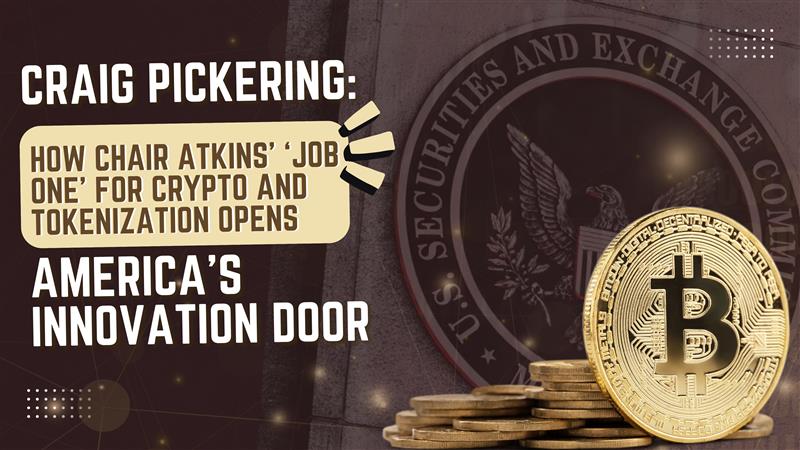This week, I read an article on The Block about SEC Chair Paul Atkins and his remarks at DC Fintech Week. His message was clear: the United States is ready to create a stronger, smarter framework for cryptocurrency and tokenization. As someone who has been following the development of blockchain and digital assets for years, this statement felt long overdue and exactly what innovators need to hear.
Atkins said that “crypto and tokenization are job one” for the SEC, which signals a major shift in how the agency views emerging technology. He talked about attracting people back to the U.S. who may have left because of unclear or restrictive regulations. His goal, he said, is to build a framework that makes sense for the future, one that encourages innovation instead of driving it away. He even joked that the SEC could stand for the “Securities and Innovation Commission.”
That kind of mindset is what has been missing. For too long, the conversation around crypto has focused on risk and regulation without enough attention to opportunity and growth. While oversight is important, a healthy balance between innovation and protection is what moves industries forward. Atkins’ comments show that the U.S. may finally be finding that balance.
I said it recently, and I’ll say it again: the door has been swung wide open in the country where capitalism thrives and innovation and progression are defined. Right now, that innovation is laser focused on two powerful technologies, artificial intelligence and blockchain. Both have the potential to reshape how we live, work, and interact with data, money, and each other.
Artificial intelligence is transforming industries faster than most people can keep up with. Blockchain is redefining transparency, ownership, and trust in digital systems. Together, these two forces are not just complementary; they are foundational to the next wave of technological progress.

When a major regulator like the SEC publicly recognizes that, it changes the game. It means that businesses, developers, and investors can start thinking about how to grow responsibly within a clear set of rules. It means talent can come back home. And it means the U.S. can compete globally on innovation again instead of watching others take the lead.
I believe the next revolution is happening right in front of us. The integration of AI and blockchain will define the next decade. These technologies are already converging in finance, healthcare, logistics, and even creative industries. The challenge is to make sure the systems we build are ethical, secure, and accessible to everyone.
That is why leadership from regulators matters. When Atkins says the SEC wants to attract innovation, he is not just talking about crypto companies. He is talking about rebuilding confidence in the U.S. as the global center for technology. It is about showing that we can protect consumers and empower entrepreneurs at the same time.
The United States has always led the world in progress because it has been willing to take smart risks. With the right framework, we can do it again. AI and blockchain are not just trends; they are the foundation of a more efficient, transparent, and connected economy.
Atkins’ comments are a reminder that policy does not have to be a roadblock. It can be a bridge that connects innovation to opportunity. The SEC’s new direction could be the push that brings back the builders, investors, and thinkers who believe that the best place to create the future is still here in America.